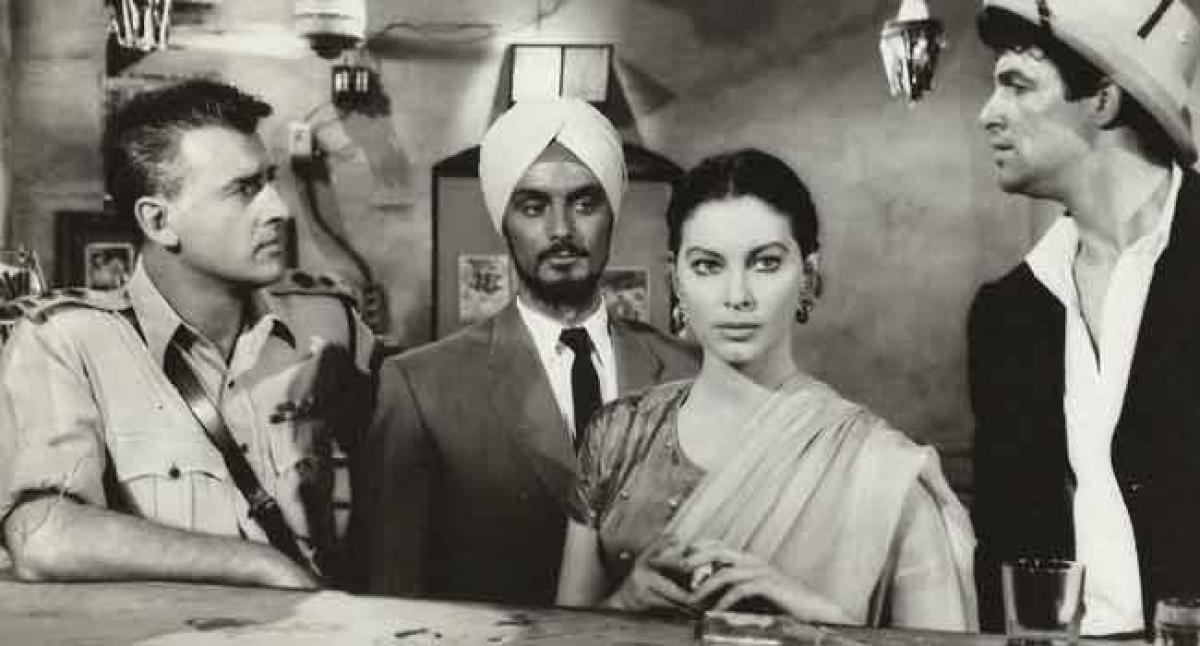Live
- First Star Outside Milky Way Captured: WOH G64 is 2,000 Times Larger Than the Sun
- Sikkim govt to constitute state Niti Ayog: CM Tamang
- CBI books Rajasthan narcotics inspector for Rs 3 lakh bribe
- Rajasthan bypolls: A tough contest between BJP and Congress
- Albania joins SEPA, paving way for EU integration
- Japanese government approves 250-billion USD economic package to ease price pain
- Six pharma companies to set up their units in Telangana
- The Unstable Events of a 17-Wicket Day in Perth: India vs Australia
- Dutch FM's Israel trip cancelled after Netanyahu's arrest warrant
- UK to increase energy price cap by 1.2 per cent
Just In

What do we make of the Raj\'s storytellers? Should we simply view them through anti-colonialism\'s uncompromising prism and unceremoniously dismiss them as standard-bearers of discredited imperialism?
What do we make of the Raj's storytellers? Should we simply view them through anti-colonialism's uncompromising prism and unceremoniously dismiss them as standard-bearers of discredited imperialism?
Or should we be more judicious in giving them a hearing (or reading) for a historical perspective of the rulers' experiences and contact with the ruled? Like this writer and his unforgettable tales of the British engagement with India from the 17th century to the post-Independence era.
John Masters, who penned over two dozen books, had a 'savage' perspective of Indian history
And don't think John Masters' stories are dated or boring - two became well-regarded films: one starring Ava Gardner and Stewart Granger, and the second, a Merchant-Ivory production, had Pierce Brosnan in the lead and Shashi Kapoor and Saeed Jaffrey figuring prominently.
Masters (1914-83) followed in Rudyard Kipling's trail but, as Khushwant Singh once said, while both understood India well, it was Masters who understood Indians too. And with good reason, for he had served in one of the Raj's most abiding and effective institutions - the British Indian Army, which was also one where the rulers had to understand a wide cross-section of the ruled and their customs to deal with them and their problems.
A prolific writer, Masters penned over two dozen books in the three decades after leaving the army in 1948 and settling in the US. Apart from his three-volume memoirs, all are fiction and nearly 10 of them comprise his "family history" of India featuring members of the Savage family.
As per chronological order of events described, they run from ‘Coromandel’ (1955) about Jason Savage, who runs away from his rural English home and ends up in 17th century India as the East India Company had just set up shop to ‘To the Coral Strand’ (1962) where Rodney Savage, who has chosen to stay back in independent India, tries to find some meaning in his life while juggling between a variety of jobs.
But according to the order they were written and published, they came between 1951 and 1962 in no fixed order, with the first being ‘Nightrunners of Bengal’ (1951). Set in the fictional central Indian town of Bhowani, representing Jhansi, while nearby is a princely state where young rani Sumitra Devi is regent after death of her elderly husband, it deals with the 1857 revolt.
Set three decades back, ‘The Deceivers’ (1952) features Rodney's father William Savage, the collector of 'Madhia' district, who finds a mass grave of slain travellers and finds out about the thugs and their ritual murders.
When his superiors dismiss his reports, he, in disguise, infiltrates one of their bands and even takes part in killings, but will he survive to bring them justice, and more importantly, can he bring himself to abandon this life?
‘The Lotus and the Wind’ (1953) is Masters' contribution to the Great Game genre with Rodney's son, Lt Robin Savage, getting a chance for redemption through secret service work to foil Russian designs in the Northwest Frontier during the 1880s.
But it was ‘Bhowani Junction’ (1954) that became his most famous work, with its depiction of the uncertainty in the run-up to Independence, and the dilemmas facing the British and the Indians as well as the Anglo-Indians (personified here as Victoria Jones) while Col Rodney Savage (great-grandson of the 1857 character) tries to maintain order in the area - and in his life.
(The novel, which also became an Ava Gardner film - but with a different ending - much irritated Anglo-Indians, otherwise proud that Masters, who suspected his family, was not pure English and ultimately found he, had a distant Indian ancestor, was one of them).
Savage returns in ‘Fandango Rock’ (1959) and ‘To the Coral Strand’. The others are ‘Far, Far the Mountain Peak’ (1957) and ‘The Ravi Lancers’ (1972), about Indian soldiers in the carnage of the Western Front in the First World War, with a prominent character related to the Savages.
Masters is often criticised for his imperial viewpoint - without appreciating that it was the prevailing milieu in his formative years - but his depiction is nuanced - friction between British and Indian characters reflect those in the Raj itself, while Indian nationalists are presented fairly. But he is a spellbinding storyteller - which can excuse much.

© 2024 Hyderabad Media House Limited/The Hans India. All rights reserved. Powered by hocalwire.com







